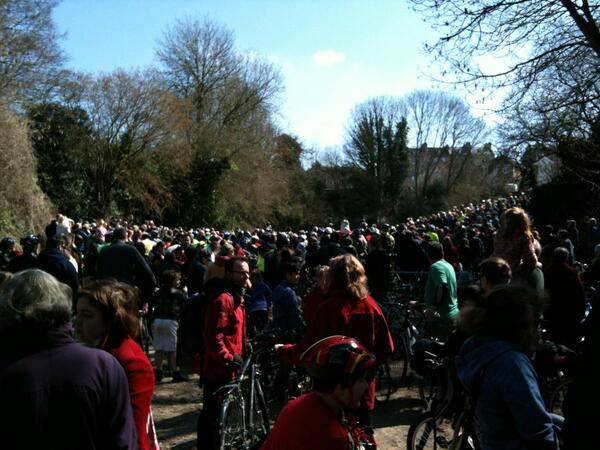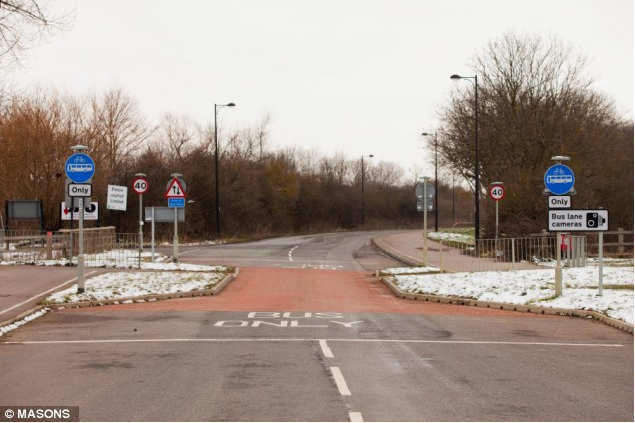Last year I wrote about the mysterious case of a bollard in Wimbledon that had the temerity to make drivers crash into it.
Almost unbelievably, the council had placed a bollard in a position where drivers cutting the corner, driving on the wrong side of the road, and not looking where they are going, would inevitably strike it. Inattentive, unobservant and hasty drivers are being unfairly punished – and put at great danger – by these menacing stationary objects.
It seems the menace is not limited to south London. A bollard in north London, on Camden Road, also has a fearsome reputation for making drivers crash into it.
A WOMAN was airlifted to hospital after her car flipped over at one of Camden’s most dangerous junctions on Tuesday. The driver, in her 20s, had to be cut out of her car and was treated for minor injuries after the crash at the Camden Road junction with Brecknock Road in Camden Town.
The dramatic scene was a repeat of an accident this time last year when a car overturned at the same spot, leading to calls for safety measures to be put in place. Witnesses said it was the 10th crash at the junction this year and that accidents happened on a “weekly basis”.
Patrick O’Kane, 52, who was watching from the Unicorn Pub opposite, said: “The car went straight into the concrete island in the middle of the road. She didn’t see it, because only a few weeks ago another car crashed into it and knocked the yellow boulder off the top.”
Yes, the driver didn’t see a hulking lump of concrete in the road, because the enormous garish yellow beacon that normally prevents drivers from crashing into garish yellow beacons had been crashed into by a previous driver.
Here’s the offending object –
Just as in Wimbledon, it seems the island has been put in place to protect pedestrians waiting to cross the road. But honestly, who cares about them, when inattentive drivers – ordinary, hard-working drivers – are at such great risk of flipping their cars over when they don’t look where they’re going?
Quite what the ‘safety measures’ that are being demanded would constitute is difficult to grasp. I can only imagine it would involve the removal of anything a driver might ever crash into, or the coating of every single object in gaudy reflective paint.
The driver speaks out –
A BARRISTER who had a lucky escape after her car flipped over a traffic island on a road with a history of traffic accidents has warned that cutting basic costs could have left her paralysed.
Carolyn Blore Mitchell, 51, who had to be cut out of her overturned car and airlifted to hospital, did not see a concrete island in the middle of Camden Road, Camden Town, because, it is claimed, the bollard there had not been replaced after the last accident.
She said: “It’s lucky I wasn’t driving my old car, which was 11 years old. Who knows if the airbags in that would have cushioned me from the windscreen. If my face had been mashed up then TfL really would have had something to answer to and they wouldn’t have scrimped on simple jobs like this again.”
Quite right. Illuminated keep left bollards should be replaced the very second someone crashes into them, not just to stop people crashing into them, but to stop people crashing into the kerbs underneath the bollards, which the bollards are designed to stop people crashing into.
And thank heavens this driver had chosen her car with better airbags, so she can crash into things with relative impunity (risk compensation, anyone?).
Ms Blore Mitchell said: “If this many people have had accidents there then it’s not just me, it really is Camden’s collision corner. The last person who crashed before me was a cab driver, someone who was a very experienced driver.”
It’s not just you – it was also a taxi driver, who, as we all know, are never in a hurry to get anywhere, and are always patient and attentive.
She added: “There were no signs warning anyone of this island slap bang in the middle of the road. At the very least it should have been painted a different colour so it didn’t just blur into the road.
Perhaps, as well as warning signs, there should be bollards – pre-bollards? – alerting drivers to the presence of a bollard further down the road? Good idea.
“If they had just replaced the bollard as they should have, then we could have saved all the time and money for an air ambulance, an ambulance, two fire engines, police time and the whole road closed off all afternoon, which must have cost the public thousands of pounds in total.”
Yes. Replace bollards when they get crashed into by drivers, so drivers don’t crash into them.
Or – this might sound radical – drivers could not turn across junctions on the wrong side of the road, and look out for objects that might be in their way?
No, that would never work.





























































